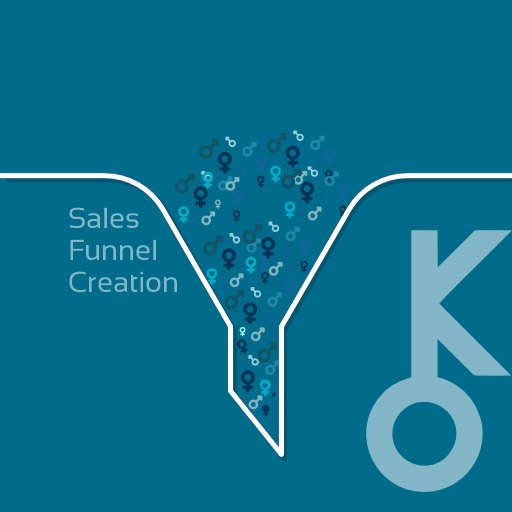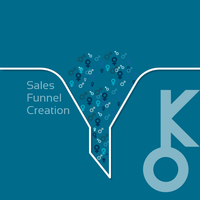Measuring Sales Funnel Performance: Key Performance Indicators (KPIs)

Measuring the performance of a sales funnel is crucial for any business aiming to optimize their sales process and drive revenue growth. One effective way to evaluate the effectiveness of a sales funnel is by using Key Performance Indicators (KPIs). KPIs provide valuable insights into the various stages of the sales funnel, allowing businesses to identify strengths, weaknesses, and potential areas for improvement.
Importance of Measuring Sales Funnel Performance
Measuring sales funnel performance offers numerous benefits that help businesses make more informed decisions and achieve better results:
Identify Bottlenecks: Monitoring KPIs helps pinpoint bottlenecks within different stages of the sales funnel. This enables businesses to address them promptly and streamline their processes, thereby increasing overall efficiency.
Optimize Conversion Rates: By tracking KPIs related to conversion rates at each stage of the funnel, businesses can identify areas where prospects are dropping off or hesitating before making a purchase. This information allows them to make data-driven improvements that increase conversion rates.
Improve Lead Quality Analysis: Tracking KPiS helps in assessing lead quality at different stages, offering insights into leads' behavior patterns, preferences, and motivations. Businesses can then utilize this data to refine their targeting strategies and focus on high-quality leads with a higher likelihood of converting.
Drive Revenue Growth: By measuring key metrics such as average deal size or customer lifetime value (CLV), companies gain accurate visibility into their revenue generation capacity. These insights enable them to set realistic growth projections and implement strategies aimed at maximizing revenue.
Key Performance Indicators (KPIs) for Measuring Sales Funnel Performance
When it comes to measuring sales funnels' performance accurately with KPIs, it is essential to select indicators relevant to each specific stage of the funnel:
- Top of Funnel (TOF) KPIs: These metrics focus on lead generation and capturing prospects' attention. Common TOF KPIs include:
Website Traffic: Measuring the total number of visitors to a website, which can indicate the effectiveness of marketing campaigns and lead generation efforts.
Conversion Rate from Visitors to Leads: Calculating the percentage of website visitors who provide their contact information or express interest in a particular offer.
Middle of Funnel (MOF) KPIs: These metrics relate to nurturing leads and moving them closer to making a purchase. Common MOF KPIs include:
Lead Engagement: Tracking email open rates, click-through rates, and other engagement metrics to gauge how effectively leads are being nurtured.
Time in Stage: Assessing time taken by leads within the funnel stages indicates how smoothly they are progressing. Long durations may signify issues requiring attention.
Bottom of Funnel (BOF) KPIs: These metrics reflect prospects who are ready to convert into paying customers. Key BOF KPIs include:
Sales Conversion Rate: Measuring the percentage of leads that successfully convert into customers. This indicates how effectively sales efforts are converting opportunities into revenue.
Average Deal Size: Evaluating the average monetary value generated by each closed deal helps identify opportunities for upselling or cross-selling.
Overall Funnel Performance KPIs: Certain indicators help assess overall funnel health across all stages:
Sales Funnel Conversion Rate: Calculating the percentage of prospects that enter the top-of-funnel stage and ultimately convert into paying customers at the bottom-of-funnel stage.
Customer Acquisition Cost (CAC): Determining the average cost required to acquire each new customer provides insights into efficiency and profitability.
By consistently measuring these essential KPIs throughout your sales funnel, you can gain valuable insights into its performance and make data-driven improvements that boost revenue growth. Remember, the specific KPIs chosen should align with your business objectives and industry dynamics, ensuring accurate measurement of success.
Sponsored
Sponsored
Sponsored
Explore More:

The Impact of AI and Machine Learning
As technology continues to advance at a rapid pace, businesses are constantly looking...

Future of Sales Funnels
The future of sales funnels is an exciting and promising concept for businesses...

Lessons Learned from Failed Funnels
In the realm of sales funnel creation, case studies serve as valuable resources...

Successful Sales Funnel Examples
In sales funnel creation, case studies play a crucial role in demonstrating the...

Case Studies in Sales Funnel Creation
In the world of sales and marketing, case studies play a crucial role...

Sales Funnel Recovery Strategies
Sales funnels are a critical component of any successful sales and marketing strategy....

Improving Funnel Efficiency
A sales funnel is a crucial component of any business's marketing strategy. It...

Identifying Funnel Leaks
A sales funnel is a systematic approach to guiding potential customers through a...

Sales Funnel Troubleshooting
Sales funnel troubleshooting is the process of identifying and resolving issues or bottlenecks...

Sales Funnel Tools and Software: Landing Page Builders
Sales funnels are essential in driving conversions and increasing revenue for businesses. To...

Sales Funnel Tools and Software: Email Marketing Tools
Sales funnel tools and software refer to the various technologies and platforms available...

Sales Funnel Tools and Software: CRM Software
Sales funnel tools are software programs or applications designed to help businesses track...

Sales Funnel Tools and Software
A sales funnel is a framework used by businesses to guide potential customers...

Measuring Sales Funnel Performance: Analytics and Reporting
Measuring sales funnel performance analytics and reporting is a crucial aspect of any...

Measuring Sales Funnel Performance: Sales Funnel Metrics
Measuring the performance of your sales funnel is crucial for understanding the effectiveness...

Measuring Sales Funnel Performance
Sales funnel performance measurement is a crucial aspect of any business operation. It...